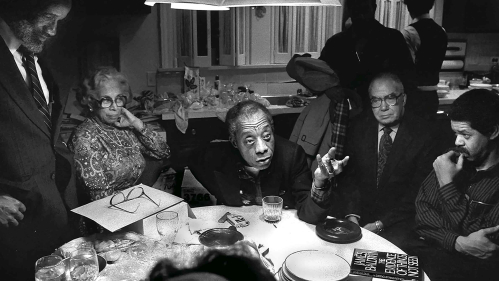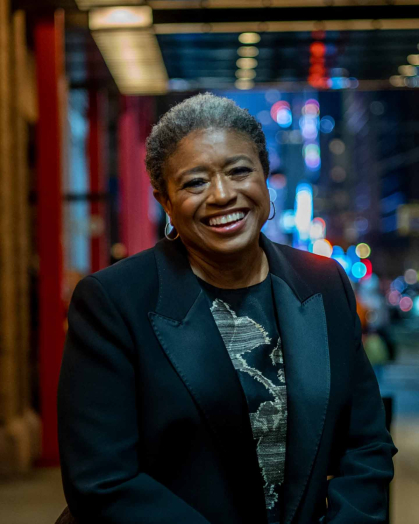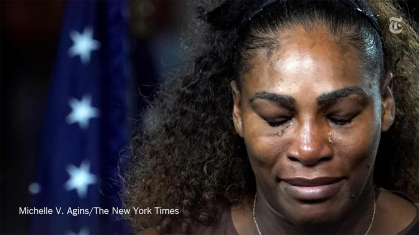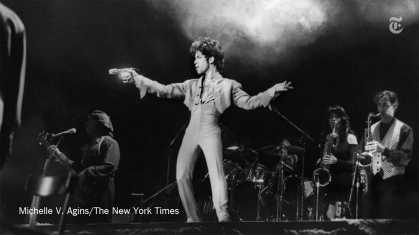Michelle V. Agins, Pulitzer Prize-Winning Photojournalist, Makes Museum Debut at the Zimmerli

The New York Times photographer visits the Rutgers–New Brunswick art museum on Sunday, April 21, to discuss her work as a storyteller
Michelle V. Agins, a Pulitzer Prize-winning photojournalist whose images tell unforgettable stories about life in America, will discuss her work, which is being exhibited for the first time at the Zimmerli Art Museum at Rutgers University–New Brunswick.

“I think I'm pinching myself,” said the Brooklyn resident, likening her new exhibition to winning the lottery. “It's amazing.”
Agins visits the museum at 71 Hamilton St., New Brunswick, N.J., on Sunday, April 21, for an artist talk and exhibition celebration from 3 p.m. to 4:30 p.m., followed by a reception until 6 p.m. The event is free (RSVP is required). It also will stream live on Facebook.
The Zimmerli’s latest exhibition, Michelle V. Agins: Storyteller, runs through Dec. 8 and features 68 photographs taken during Agins’ 35 years at The New York Times.
Agins was the second Black woman ever hired as a staff photographer at The New York Times in 1989. She built her early career at a time when photo editors gave very few assignments to women – much less to women of color.
Her assignments offer some of the most important documentation of race relations, celebrity culture, sports, spirituality and economic disparity in America, Zimmerli officials said.
“Agins’ practice is as a visual storyteller, with a powerful humanizing vision,” said Maura Reilly, the Zimmerli’s director who organized the exhibition with New York Times picture editor Maura Foley, a coworker of Agins for decades. “With a keen eye toward narrative and aesthetic detail, Agins’ images, like those of Richard Avedon and Gordon Parks, bridge the gap between photojournalism and fine art photography.”

Agins said Reilly is the reason she has her first exhibition.
“I've been harassed for years to do this, and it took a really wonderful person for me to say yes,” said Agins, adding that Reilly would attend her block parties in Bedford Stuyvesant and encourage her to hold an exhibition at the Zimmerli.
Storyteller spans an array of news moments that Agins has covered for The New York Times. The exhibition features her early pictures of the protests surrounding the murder of Black teenager Yusef Hawkins in 1989 and the 1992 Democratic National Convention.
The exhibition includes photographs of New Yorkers who have been aided by The New York Times Neediest Cases Fund (now called the Communities Fund), as well as her 1994 series Another America: Life on 129th Street, which studies the effects of gun violence on a Harlem neighborhood.
More recent images spotlight the Kamala Harris campaign and portraits of artist and activist Stormé DeLarverie, a survivor of the Stonewall uprising, a series of protests by members of the LGBTQ+ community. Agins has captured other iconic figures, including James Baldwin, Prince, Aretha Franklin, Serena Williams, Anthony Mason and Anita Hill.

“I was a person that persevered through all the different levels of hatred – from being a Black woman to being a woman,” Agins said. “It's taking perseverance to look beyond, always keeping my eye on the prize, in a sense. I had to fight through a lot of males – Black males, white males, anybody growing up – when I decided I really wanted to do this.”
She added: “Of course, I know I should have had many shows by now, but this is the one that counts because I was ready for it.”
“The exhibition itself aligns with one of the museum’s many missions, which is to present work by underrepresented artists, and to offer them a platform to share their extraordinary talents with our diverse audiences,” Reilly said.
Agins’ advice for prospective photojournalists? Don’t wait around for an editor to hand you work.
“They should make their own assignment then pitch their idea through a publication,” Agins said. “A lot of kids I meet say, ‘Oh, how do I get that gig?’ I say, ‘You make a gig. It's up to you.’”


